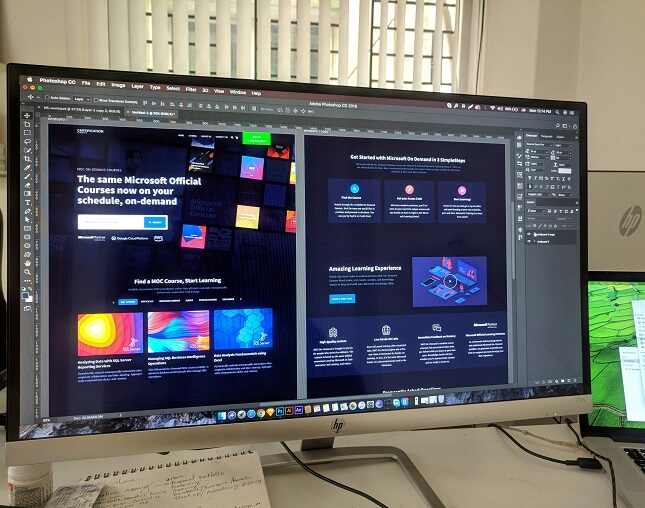Building a website is more than just securing a domain name and picking a template; it’s about creating a powerful digital asset that serves a specific purpose for your business. The journey from a simple idea to a live, high-performing site can seem complex, but by following a structured, strategic approach, you can create a website that not only looks professional but actively helps you achieve your business goals. This is the difference between having a digital brochure and a true conversion machine, which is why working with experts in professional website design services is so critical. This guide with Adicator breaks down the essential steps to ensure your website is built for success from the ground up.
1) The Planning Phase: Defining Your Digital Blueprint
Before a single line of code is written, you must have a clear plan. A website without a strategy is like a ship without a rudder—it might look good, but it won’t get you to your destination. This phase is the most critical part of the entire process.
- Define Your Business Goals: Get specific. Instead of “I want more sales,” set a SMART goal like “I want to increase online sales by 15% in the next six months.” Your goals will dictate every decision you make, from the site’s layout to the content you create.
- Identify Your Target Audience: Who are you trying to reach? Create detailed buyer personas that include demographics, pain points, and online behaviors. Understanding your audience helps you tailor your design, language, and calls-to-action to their needs.
- Conduct Competitor Research: Analyze what your competitors are doing well and where they’re falling short. Look at their messaging, site structure, and user experience to find opportunities to differentiate your brand.
- Map Your Site Structure: Create a sitemap that outlines all the pages your website will have and how they connect. This ensures logical navigation and a seamless user experience, making it easy for visitors to find what they need.
2) The Design Phase: Crafting a User-First Experience
This is where your vision starts to take shape. However, design isn’t just about aesthetics; it’s about usability. A great design guides the user effortlessly toward your business goals.
- Create Wireframes and Mockups: Think of wireframes as the blueprint for your website. They are low-fidelity layouts that focus on the placement of key elements like navigation menus, forms, and images. Mockups then add the visual design, including colors, typography, and imagery, bringing the design to life.
- Prioritize User Experience (UX): A positive UX is paramount. This means your site should be intuitive, easy to navigate, and quick to load. Avoid clutter and distractions, and ensure that your most important content is easily accessible.
- Ensure Mobile Responsiveness: With a majority of web traffic now coming from mobile devices, a responsive design is non-negotiable.
- Focus on Visuals and Branding: Choose a color scheme, fonts, and imagery that are consistent with your brand identity. High-quality visuals are crucial for making a professional impression, so avoid generic stock photos.
3) The Development Phase: Building a Strong Foundation
This is the technical phase where the design is transformed into a functional website. Choosing the right platform and framework is key to building a site that is scalable, secure, and easy to maintain.
- Choose the Right Platform: Consider a Content Management System like WordPress, or platforms like Wix or Squarespace, depending on your needs. A custom-built site may be a better fit if your business requires unique functionality or integrations.
- Focus on Technical SEO: A well-built website should be optimized for search engines from the start. This includes creating SEO-friendly URLs, optimizing image file sizes and alt text, and ensuring fast page loading speeds.
- Integrate Essential Tools: Connect your website to third-party tools that are crucial for your business.
- Implement a Content Strategy: The development phase is an excellent time to start creating your content. Write compelling copy that speaks to your audience’s needs, and optimize every page with relevant keywords.
4) The Launch Phase: Going Live with Confidence
A successful launch is not just about flipping a switch. It requires careful preparation to ensure a smooth transition and a positive first impression.
- Perform Rigorous Testing: Before going live, test every aspect of your site. Check for broken links, ensure all forms and CTAs are working correctly, and confirm that the site is compatible with different browsers and devices.
- Set Up Analytics: Install Google Analytics and Google Search Console to monitor your site’s performance. These tools will provide invaluable data on traffic and keyword rankings, helping you make informed decisions post-launch.
- Promote Your New Site: Announce your launch across all your marketing channels, including social media, email newsletters, and any print materials you have.
- Create a Maintenance Plan: Your website is a living asset that needs constant care. Plan for regular updates, backups, security checks, and content refreshes.
5) The Maintenance and Optimization Phase: Sustaining Growth
The work doesn’t stop once your site is live. Ongoing maintenance and optimization are what turn a good website into a great one.
- Regularly Update Content: Fresh, relevant content not only engages your audience but also signals to search engines that your site is active and authoritative. Update old blog posts, and refresh product descriptions.
- Monitor Performance with Analytics: Use the data from your analytics tools to identify areas for improvement. Are users bouncing from a particular page? Is a specific keyword driving high-quality traffic?
- Conduct A/B Testing: Experiment with different headlines, images, or calls-to-action to see what resonates best with your audience.
- Ensure Security and Backups: Regularly update your CMS, plugins, and themes to protect your site from vulnerabilities. Schedule routine backups to ensure your data is safe in case of an unforeseen issue.
Building a website that truly works for your business is a continuous process of planning, building, and refining. By following these steps and focusing on your goals at every stage, you can create a digital presence that not only attracts visitors but converts them into loyal customers.









































